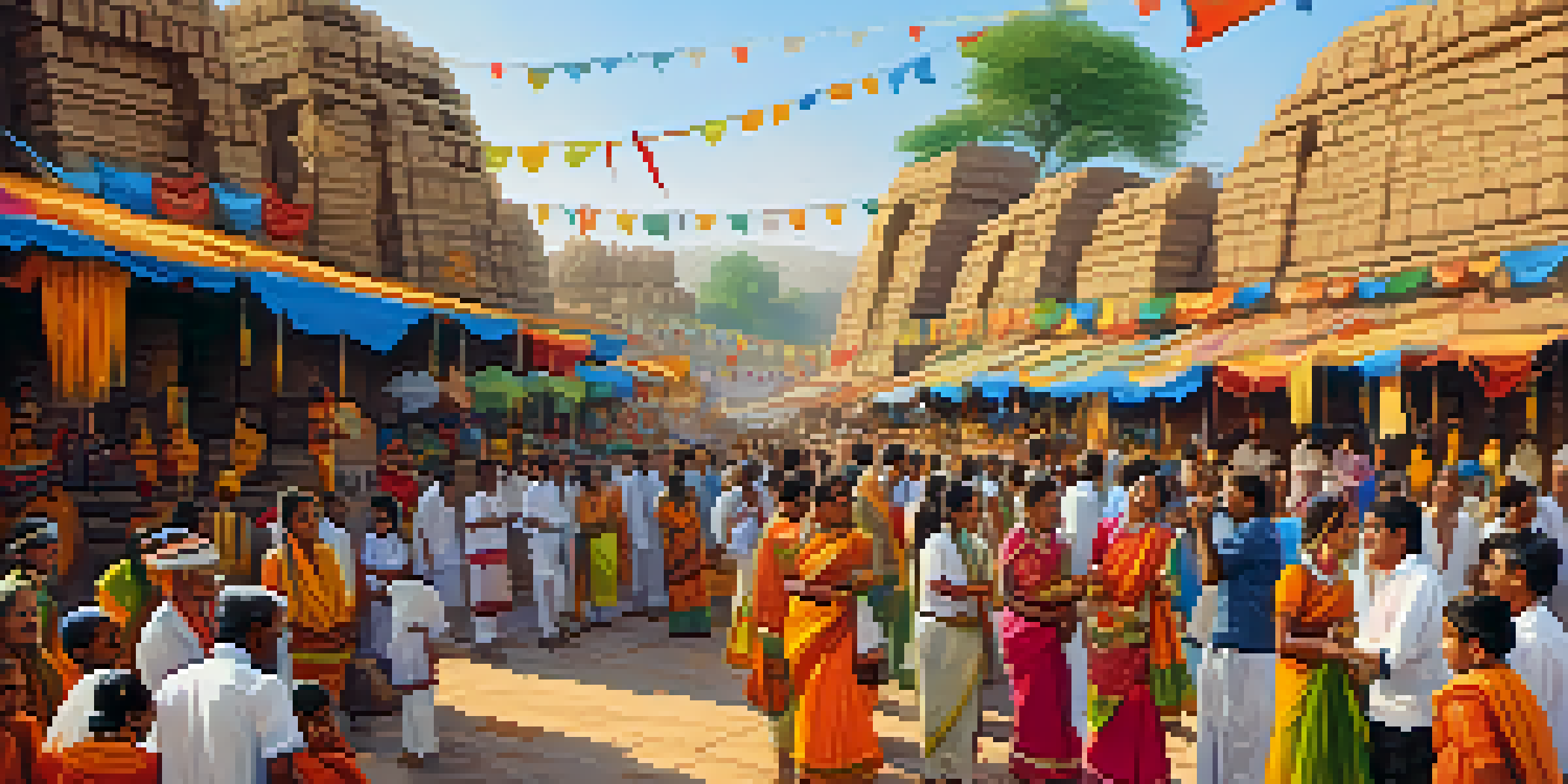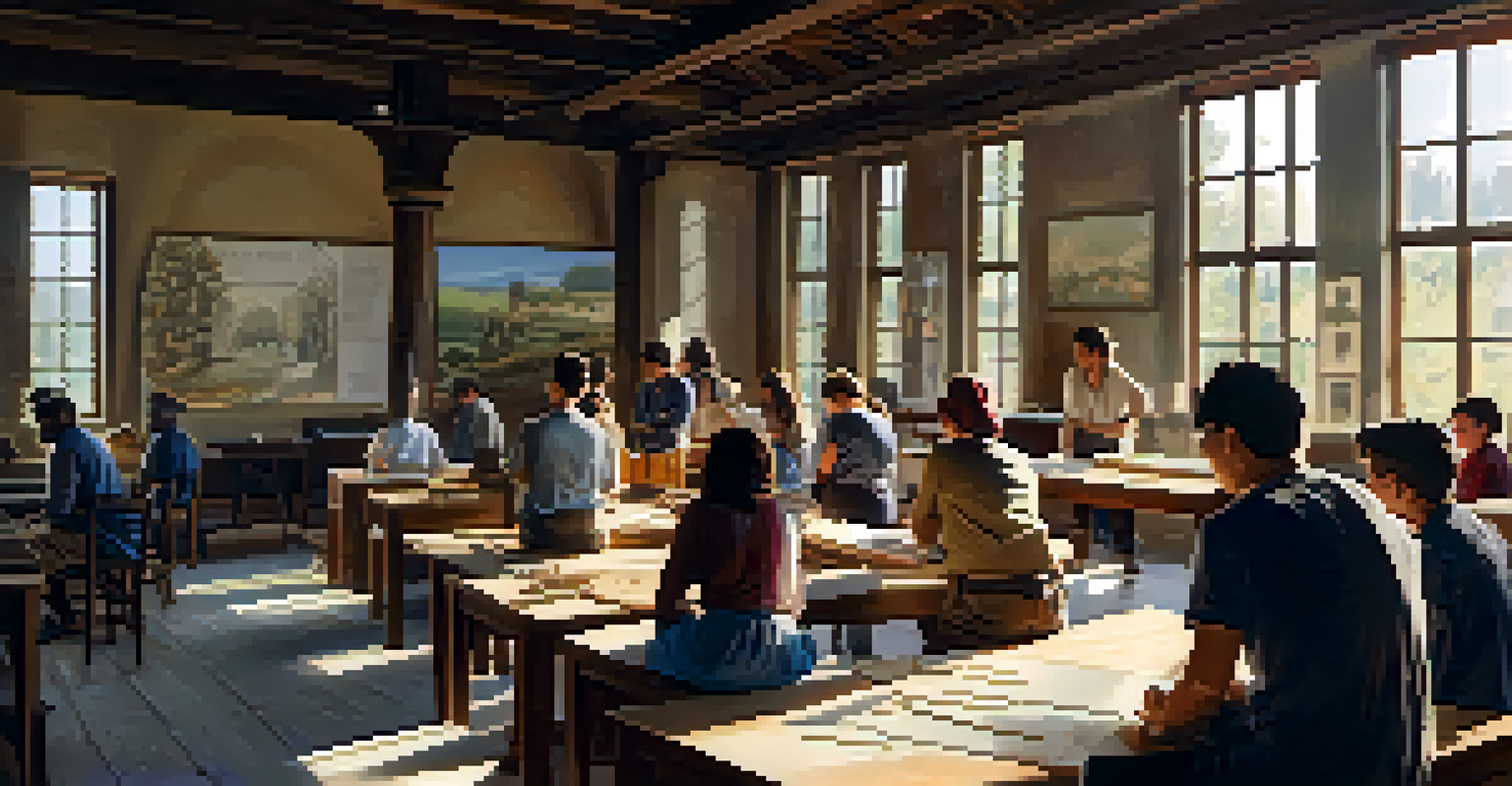Community Involvement in India's Historical Site Preservation

The Importance of Historical Site Preservation in India
India is home to a treasure trove of historical sites, each telling a story of its rich culture and heritage. Preserving these sites is crucial not just for their historical significance, but also for education and tourism. When communities get involved, they foster a sense of pride and ownership, which can lead to more effective preservation efforts.
Preservation of our heritage is not just about saving the past; it's about securing our future.
These sites, from ancient forts to temples, serve as a reminder of India's diverse history and architectural brilliance. They attract millions of tourists, which in turn provides economic opportunities for local communities. Thus, the preservation of these historical treasures is not only about maintaining structures, but also about sustaining livelihoods.
Moreover, preserving these sites helps to keep alive the traditions and stories of past generations. When communities actively engage in these efforts, they ensure that the cultural significance is passed down to future generations, creating a living history that resonates with all.
Role of Local Communities in Preservation Efforts
Local communities play a pivotal role in the preservation of historical sites. They often serve as the first line of defense against neglect and deterioration, taking initiative to organize clean-up drives and awareness campaigns. Their intimate knowledge of the site’s history makes them essential custodians of cultural heritage.

Community involvement also helps in creating a sense of belonging and responsibility towards these sites. When locals are engaged, they develop a bond with their heritage, leading to more sustainable preservation practices. This can involve everything from local artisans restoring art to community-led tours that educate visitors about the site's significance.
Community Involvement is Key
Local communities are essential in preserving historical sites, fostering pride and responsibility while ensuring the cultural significance is passed down.
Additionally, these grassroots efforts can attract attention from larger organizations and government bodies. When communities demonstrate their commitment to preservation, it often leads to increased funding and support for restoration projects, facilitating a collaborative approach to safeguarding cultural heritage.
Successful Community Initiatives in India
There are numerous examples across India where communities have successfully taken charge of preserving their historical sites. For instance, the residents of Hampi in Karnataka have banded together to maintain the ruins of this UNESCO World Heritage Site. Their efforts include organizing festivals that celebrate local culture and history, drawing both tourists and attention to the importance of preservation.
Communities are the guardians of their own history; their involvement is vital to the preservation of cultural heritage.
In Rajasthan, communities around the Amer Fort have initiated programs to restore and maintain the fort's architecture, while also providing training to local youth in crafts and tourism. These initiatives not only protect the site but also empower the community economically and socially, creating a model for sustainable tourism.
These success stories highlight the importance of local knowledge and passion in preservation. When communities are empowered to take ownership, they create a synergy between cultural heritage and modern livelihood, ensuring that historical sites remain vibrant and relevant.
Challenges Faced by Communities in Preservation
Despite the enthusiasm and dedication of local communities, several challenges hinder effective preservation of historical sites. One major hurdle is insufficient funding, as many communities lack the financial resources necessary for extensive restoration projects. This often leads to reliance on sporadic government aid, which may not always be reliable.
Additionally, there can be a lack of awareness or training among community members regarding preservation techniques. Without the proper knowledge, even the most passionate efforts can fall short, leading to further deterioration of the site. Workshops and training programs can help bridge this gap, but they require investment and support.
Challenges Hinder Preservation
Insufficient funding and urban pressures pose significant challenges for communities striving to maintain their historical heritage.
Moreover, the increasing pressure from urban development and tourism can pose significant threats. Communities often find themselves at odds with commercial interests that prioritize profit over preservation. Balancing these conflicting interests is a constant challenge, necessitating ongoing dialogue and collaboration with various stakeholders.
Government Support for Community Initiatives
Government support plays a critical role in empowering communities to preserve their historical sites. Policies that promote community involvement can enhance local efforts, providing much-needed funding and resources. When local governments recognize the value of community-led initiatives, they can create frameworks that support and amplify these efforts.
For example, the Archaeological Survey of India has initiated programs that encourage local participation in preservation projects. By offering training and financial support to community groups, they help equip locals with the tools and knowledge needed to protect their heritage effectively.
Moreover, government-backed awareness campaigns can elevate the importance of these sites, attracting both tourists and conservationists. This not only benefits preservation efforts but also instills a sense of pride among community members, reinforcing their role as guardians of their cultural heritage.
The Role of Technology in Preservation
In today's digital age, technology can significantly enhance community efforts in preserving historical sites. From 3D scanning to virtual tours, technological advancements provide innovative solutions for documenting and maintaining these sites. Local communities can leverage these tools to raise awareness and attract support for their preservation initiatives.
For instance, mobile apps can be developed to educate visitors about the historical significance of various sites, encouraging responsible tourism. These applications can also facilitate community-led tours, allowing locals to share their stories and knowledge with a broader audience.
Technology Enhances Preservation Efforts
Innovative technologies, like 3D scanning and social media, empower communities to document, promote, and protect their historical sites effectively.
Furthermore, social media platforms serve as powerful tools for mobilizing community action. By sharing their experiences and challenges, communities can connect with like-minded individuals and organizations, fostering a network of support that transcends geographical boundaries. This digital connectivity can amplify their voices and efforts in preservation.
The Future of Community Involvement in Preservation
Looking ahead, the future of community involvement in preserving India's historical sites appears promising. As awareness grows about the importance of cultural heritage, more communities are likely to engage in preservation efforts. This shift can lead to innovative collaborations between local groups, government bodies, and cultural organizations.
Increased focus on sustainable tourism can further enhance these initiatives, ensuring that local communities benefit economically while preserving their heritage. By integrating preservation with local livelihoods, communities can create a win-win situation that nurtures both culture and economy.

Ultimately, empowering communities to take an active role in preserving their historical sites will ensure that India’s rich heritage continues to thrive for generations to come. As local voices become more prominent in these discussions, we can look forward to a future where cultural preservation is woven into the fabric of everyday life.